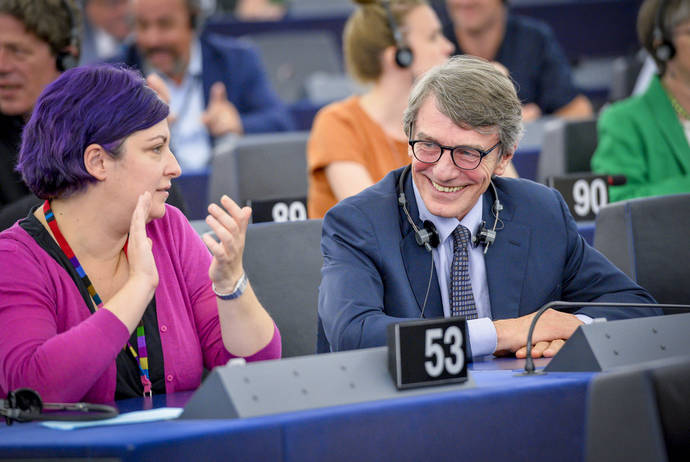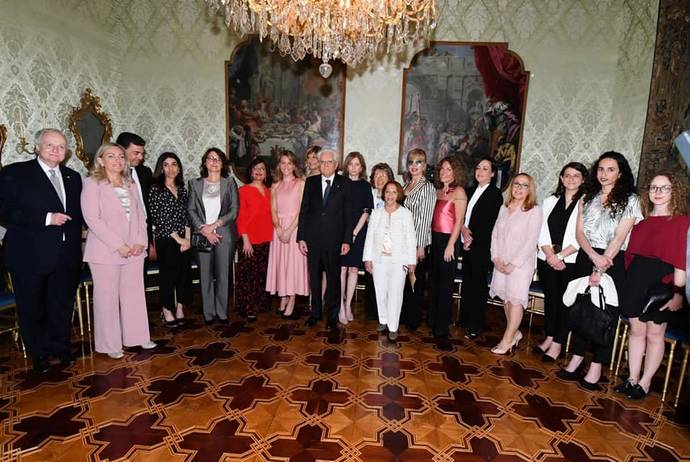“The business was purchased by grandpa, who died shortly after however, so it was taken over by my grandma, Anna Maria, a great woman and a hard worker,” the young Roberta, who actively and with great determination and competence participates in the activities of Quattro Portoni, her family’s business located near Bergamo, tells us enthusiastically.
We are yet again struck by the precision, passion, and especially the vision with which the family heirs of small Italian businesses discuss their work abroad. She is surrounded by her family, united by a passion for their work that cannot go unnoticed. These are the stories we love to tell.
So, Roberta starts telling us about her grandmother.
You said she took over the company?
Roberta: Yes, she handled it along with another business.
Grandpa dealt in agricultural machinery, so they had an agricultural business in this sense. They rented their fields and the animals were taken care of by sharecroppers.
Afterwards, my grandfather had an accident at work while he was packing hay and he died.
And my grandmother, at 36, was left alone to take care of four sons, the eldest of which was 11 and the youngest 5.
When did this happen?
Roberta: Grampa died in 1968. And grandma went on to manage the business, initially with the agricultural machinery and then also raising the animals. She also founded a packaging company, which now handles the packaging of our products. This until my dad and his second brother, who was a veterinarian, took on the farm and started raising frisone cows up until 2000.
During that time, our company was in full expansion but in Italy there was the problem of milk quotas. We produced a lot of milk and had to rent out our milk quotas to others, until the situation became unsustainable because we risked having to throw away some of our milk.
So, my dad and uncle looked at each other and thought, what animal could fit in our stables and doesn’t face the milk quota problem?
They thought of bufale. (Italian Mediterranean Buffalo, ed.)
Di necessità virtu, as we say.
Roberta: Exactly. But we took a risk because the bufale weren’t well-known in the North of the country then. Tendentially, these animals are typical of Southern Italy.
So they tried with 40 animals at first. And they found that the bufale have character. If they don’t trust you or if they’re nervous, they have the ability to hold their milk. So you milk them but nothing comes out! They have to be in a favorable, relaxed environment.
They saw that things were going well so they decided to sell all the cows, they sold all the milk quotas and in 2003 we switched over completely. We got our first big batch of bufale from Latina, near Rome. In 2005, we started producing cheese, one year later we inaugurated our cheese factory. And from there our adventure began.
Does the whole family work for the company?
Roberta: My sister (points) is a pediatrician so she followed her own path. I’m about to receive my law degree and the idea is to become a corporate lawyer for the company.
But we’ve all lived through this adventure. At the beginning we didn’t know what we were doing. We all still remember the day when he (points at her father) brought the prototype of the first cheese he handmade himself: a total disaster.
But from there things kept getting better and there have been many fulfilling moments. There have also been a lot of prizes, which have allowed us to make ourselves known. Also because my dad and my uncle were the first to ever think of turning buffalo milk into a cheese that wasn’t fresh, but aged. Because there’s always been buffalo mozzarella, or ricotta, or scamorza, but nobody had ever thought of aged cheese.
So, since the local tradition was that of gorgonzola, taleggio, quartirolo lombardo, they decided, ok let’s make those but using 100% buffalo milk. Now, some others have started making something with buffalo milk, they usually mix it with cow’s milk.
Where do you sell it? How is your product distributed?
Roberta: I think that the United States are our first client. (she turns to the others)
Bruno: Yes, the United States are very important.
Roberta: But also Europe!
Bruno: (nods) France, Switzerland…
You started exporting right away.
Bruno: Well, exporting came naturally. We began getting our name out there through our presence at fairs such as this one.
We had our inauguration, there were plenty of people. We were also lucky that the event resonated well, television stations came, they wanted to see what we were up to. And this gave us some confidence so I suggested we participate in an international fair like Tutto Food in Milan. And there we met Forever Cheese.
During our very first fair, we met what remains to this day our most important client. It’s a channel we haven’t abandoned since.
So how do you envision the company’s future?
Roberta: I see growth. Growth because we have on our side the advantage of having been the first. The market is certainly expanding and there are those interested in making aged buffalo milk products but we have now…
Bruno: 12 years.
Roberta: 12 years of skills and experience, which allow us to anticipate how the milk will behave, what the market’s interests will be, where people look to, what works best.
Bruno: The key is that we control the entire production line, right from the animals. Our objective of expanding cheese production will also be an expansion of the farm. The two go hand in hand. We’re not going to become an industrial cheese factory, we will stay true to ourselves. And our model is hard to replicate, it takes years of investments, you have to be an animal farmer, and you can’t do that in a day, it takes years and lots of work.
Can you describe the place you work at, your company? Take us with you...
Roberta: So, we walk into a large gravel courtyard and on our right we have the old farmer’s home, where the sharecroppers lived and managed my grandparents’ company.
Directly across from the entrance are the old stables built by Nonna Anna and all the old part of the stables continue on in front of us towards the left. To the left are the silos filled with feed for the animals. Then, beyond the courtyards, continuing towards the right you’ll find the cheese factory that they built (points to her father) and beyond that the new stables, which were built according to animal welfare indications, so it’s extremely tall to allow for the air to flow properly.
Inside are the cisterns filled with liquid animal waste. We’ve started following a path of sustainability so we are part of a consortium that produces sustainable energy, biogas. So we give the liquid waste, it is then returned to us nitrate-free and this allows us to engage in a circular economy: we reutilize the cleaned waste to fertilize the fields, which produce forage for the bufale, which produce milk, which we turn into cheese, all within the range of a few kilometers.
We stand with them, with this passion that many of these companies share in Italy. Precious realities and strongholds of the past and especially the future of our economy.







































